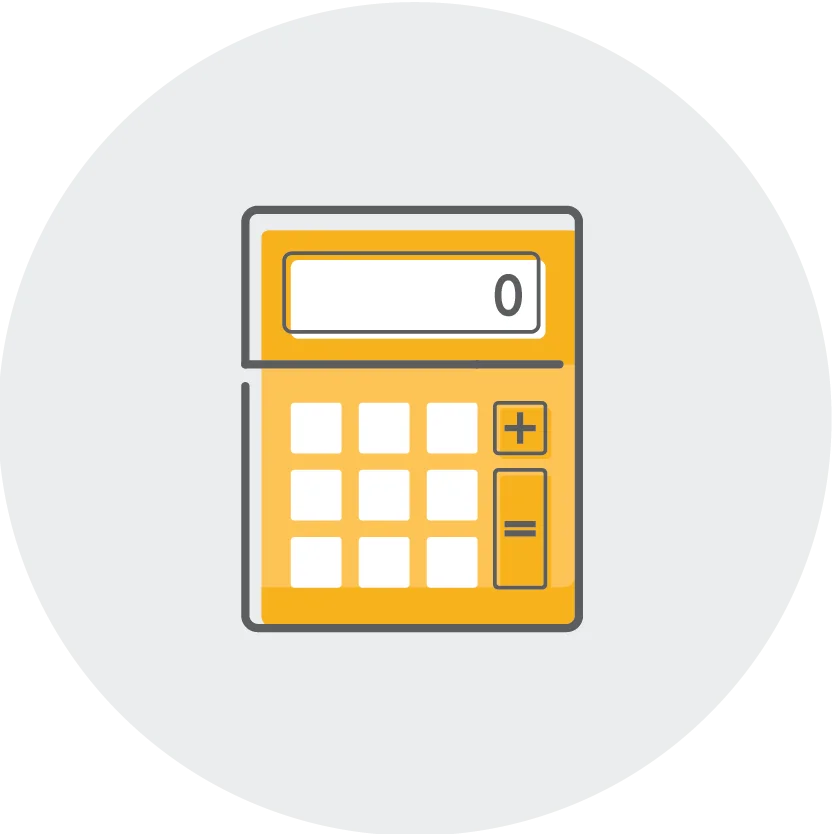Home Affordability Calculator
Understanding how much home you can afford is an important first step in the homebuying process. It can help you know how much your mortgage loan will be approved for and it may help influence where you buy, when you buy and what kind of home mortgage loan you apply for.
Legal Disclosures
30-year Fixed-Rate Loan:
The estimated interest rate is based on a $175,000, 30-year Fixed-Rate Conventional Loan with a purchase price of $250,000, a 25 Day Lock, FICO score 760, and loan-to-value (LTV) 70%. The quote above includes one discount point. One point is equal to one percent of your loan amount. Payment does not include taxes and insurance. The actual payment amount will be greater. Some state and county maximum loan amount restrictions may apply.
15-year Fixed-Rate Loan:
The estimated interest rate is based on a $175,000, 15-year Fixed-Rate Loan with a purchase price of $250,000, a 25 Day Lock, FICO score 760, and loan-to-value (LTV) 70%. The quote above includes one discount point. One point is equal to one percent of your loan amount. Payment does not include taxes and insurance. The actual payment amount will be greater. Some state and county maximum loan amount restrictions may apply.
30-year Fixed-Rate VA Loan:
The estimated interest rate is based on a $250,000, 30-year Fixed-Rate VA Loan with a 25 day lock, FICO score 760, and loan-to-value (LTV) 100%. The quote above includes one discount point. Payment does not include taxes and insurance premiums. The actual payment amount will be greater. VA loans do not require PMI. The VA loan is a benefit of military service and only offered to veterans, surviving spouses and active duty military.
FHA Loan – Rate is fixed:
The estimated interest rate is based on a $241,250, FHA 30-year Fixed-Rate Loan with a 25 day lock, FICO score 760, and loan-to-value (LTV) 96.5% (purchase price is $250,000). The quote above includes one discount point. Mortgage payment would include a one-time upfront mortgage insurance premium (MIP) at 1.75% of the base loan amount and a monthly MIP calculated at 0.55% of the base loan amount. For mortgages with a loan-to-value (LTV) ratio of 96.5%, the 0.5% monthly MIP will be paid for the first 11 years of the mortgage term. Thereafter, the monthly loan payment will consist of equal monthly principal and interest payments only until the end of the loan. Payment does not include taxes and insurance premiums. The actual payment amount will be greater.
Some state and county maximum loan amount restrictions may apply.
Assumptions
- Lenders calculate rates using assumptions: basic loan details. For all rates shown, unless otherwise noted, we assumed:
- You’re buying or refinancing a single-family home that’s your primary residence.
- If refinancing, you’re not taking cash out.
- Closing costs will be paid up front, not rolled into the loan.
- Your debt-to-income ratio is less than 30%.
- Your credit score is over 760.
- You’ll have an escrow account for payment of taxes and insurance.
Disclosures
- Mortgage rates can change daily.
- Some loan options may not be available in all states.
- Some jumbo loan options may not be available to first-time home buyers.
- Lending services may not be available in all areas.
- Some restrictions may apply.
- The rate lock period is 25 days.
Understanding the Basics
Several factors are used when calculating how much house you can afford: household income, existing monthly debt payments such as school loans or car payments, and how much you have saved for your down payment.
Total Savings
You will also want to have a solid amount saved for emergencies – generally about three months of budgeted mortgage payments – in reserve should an expected event occur. Even if your household income and costs are relatively the same every month, emergencies can impact your ability to pay and it’s important to have additional savings set aside apart from the cash you plan to use for your purchase.
Debt-to-Income (DTI) ratios
Another important element of understanding how much home you can afford is your debt-to-income (DTI) ratio. This is calculated using your total monthly debt payments to the amount you take in before taxes.
Many lenders recommend your housing expenses shouldn’t be more than 25%-30% of your monthly income. For example, if you budget your monthly mortgage payment, with taxes and insurance, at $1,260 a month and you have a monthly income of $4,500 before taxes, your DTI is 28%. (1260 / 4500 = 0.28)
You can also flip the equation to find what your housing budget should be by multiplying your income by 0.28. In the above example, that would allow a mortgage payment of $1,260 to achieve a 28% DTI. (4500 X 0.28 = 1,260)
Loan Program or Loan Type
Your loan program will also affect how much home you can afford. If you’re a member of the armed forces, you may qualify for lower rates, lower fees, zero down payment and relaxed qualifications that can help you find a home you can afford without stretching your savings with a VA home loan.
As a first home homeowner, you may be eligible for an FHA loan, which is a government-backed home loan distributed by private lenders like Mutual of Omaha Mortgage. FHA loans often offer low down payment requirements and loan closing costs, making this loan program an attractive option for qualifying homebuyers.
Credit Worthiness
How well you manage credit is reflected in your credit score and is one of the most important factors in determining your interest rate and loan approval.
Interest Rate
Your interest rate is the percentage of your loan the lender charges a borrower for taking out a loan. Typically, the higher your credit score or the lower the term, the better the interest rate. However, many factors such as market rates, taxes and fees can all affect your interest rate as well.
When you’re ready to purchase your new home, contact a Mutual of Omaha loan specialist to get you a competitive rate. Click here to visit Mutual of Omaha Mortgage’s full list of purchase loan offerings and get started today!






